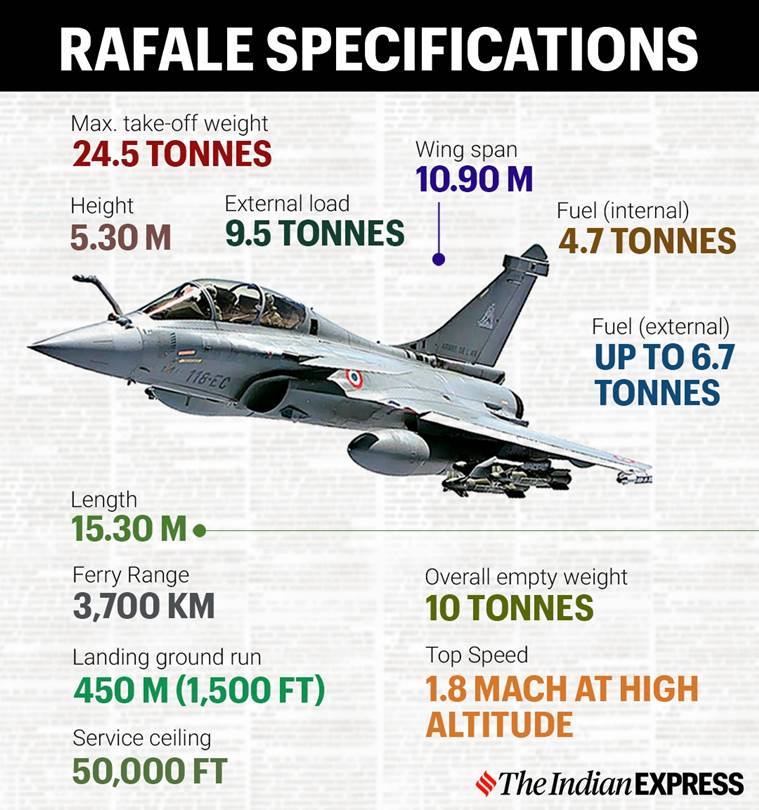IAF Challenge Is Now To Boost Jet Strength

The strength of 29 squadrons by 2023 includes two Rafale squadrons, one additional MiG-29 squadron and one additional squadron of indigenous Light Combat Aircraft (LCA) TEJAS jets, into the IAF fleet as per schedule
THE INDUCTION of five French Rafale aircraft at Ambala on Wednesday will be a game changer in many ways, but may not make up for the shortfall faced by the Indian Air Force, according to senior officers of IAF.
The Rafale aircraft’s arrival brought attention to the biggest challenge confronting the IAF: its depleting strength of fighter jets. Against an authorisation of 42 squadrons, it will have 29 squadrons in 2023. At present, its fleet comprises 30 squadrons of fighter jets.
“Is getting two squadrons of Rafale significant? Yes, it is a game changer in many ways. But does this induction make up for all the other shortfalls faced by the IAF? No, those challenges remain and will have to be tackled,” a senior IAF officer told The Indian Express.
The strength of 29 squadrons by 2023 includes two Rafale squadrons, one additional MiG-29 squadron and one additional squadron of indigenous TEJAS jets, into the IAF fleet as per schedule. By then, the Pakistan Air Force will have 27 fighter squadrons while China’s PLA Air Force is assessed to have the capacity to bear at least 42 squadrons against India.

The shortfall in the current strength is expected to be made up over the next two decades by the proposal for acquisition of 114 foreign fighter jets under the Make in India scheme, along with the acquisition of indigenous TEJAS fighters.
“The squadron strength is a force structure issue and depends on a host of factors. We cannot lose sight of the developments in the North and West; with both our adversaries continuously increasing and upgrading their inventories,” said IAF Chief Air Chief Marshal RKS Bhadauria in May.
Even though the IAF desires a strength of 45 fighter squadrons for a two-front challenge, the last time it had its authorised complement of 42 squadrons was in 2002, just after India had mobilised its forces against Pakistan following the terror attack on Parliament.
Since then, the numbers have steadily fallen, and the trend will continue with five squadrons of old Russian MiG aircraft getting decommissioned in the next couple of years while IAF adds four additional squadrons. The IAF has long been cognisant of the challenge of its depleting fighter squadron strength. In June 2017, the then IAF Chief Air Chief Marshal BS Dhanoa had told this newspaper that “one of our main focus areas is to build up to the authorised strength of fighter squadrons at the earliest”.
The IAF’s authorised strength of 42 fighter squadrons “is the minimum strength necessary to dominate a two-front conflict,” Dhanoa who saw the Balakot airstrikes as IAF Chief last year had said.
The IAF plans to procure 83 TEJAS Mk-IAs and more than 100 TEJAS Mk-II from Hindustan Aeronautics Limited (HAL), and has already raised the second squadron of TEJAS against its initial order of 40 aircraft. However, the supplies from HAL are behind the scheduled induction plan, leading to discomfort within the IAF.
IAF issued a request for information for 114 multirole fighters in June 2018 to foreign manufacturers: Boeing, Lockheed Martin, Dassault Aviation, Saab AB, Airbus Defence and Space, Russian Aircraft Corporation and Sukhoi Company. It plans to induct the aircraft within 12 years of the contract. A request for proposal is awaited.
Meanwhile, the government has decided to procure 21 MiG-29 aircraft from Russia which would be inducted into service as an additional squadron. The 12 Su-30MKIs, lost in accidents, are also being replenished by HAL through a contract with Russia, which has been approved by the government. However, the Russian connect is also limited as the IAF had earlier pulled out of the collaborative venture with Sukhoi to develop the Fifth Generation Fighter Aircraft (FGFA) after 11 years, citing disagreements over cost sharing plans, technology transfers and the test aircraft’s technological capabilities.
France has already handed over 10 Rafale jets to India, of which five have flown to Ambala. All the 36 Rafale fighter jets from France are expected to be in India by end-2021. The fitting of additional India-specific enhancements is likely to take a few more months.



No comments:
Post a Comment